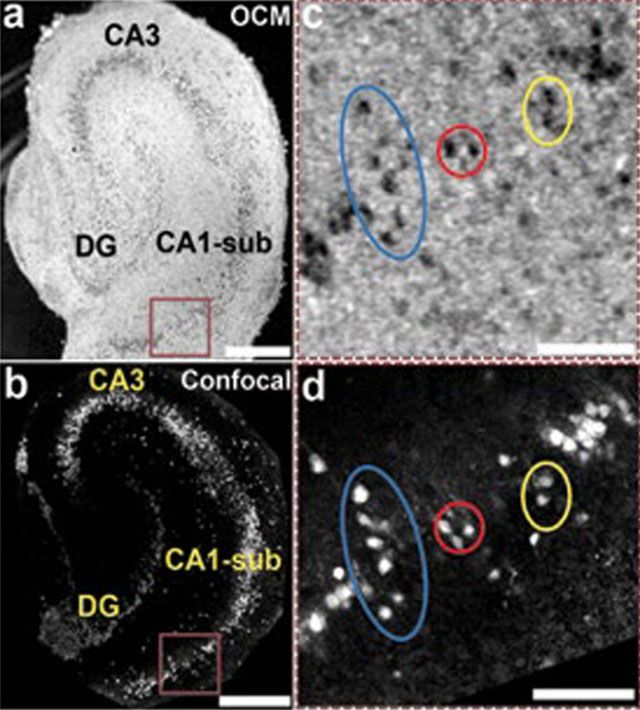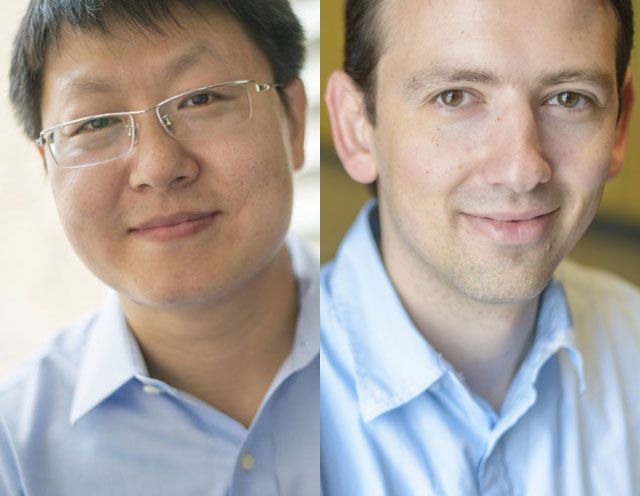Chao Zhou likens our current brain-mapping ability to a Global Positioning System (GPS) that can help a user locate a city, but cannot offer a street-level view. Without such a map, says the assistant professor of electrical and computer engineering, medicine remains in the dark about the most effective ways to treat, prevent, and cure disorders as Alzheimer's, schizophrenia, autism, epilepsy, and traumatic brain injury.
Current neural recording techniques use electrodes, or require the labeling of neurons with a genetic or chemical probe. These methods have significant downsides, according to Yevgeny Berdichevsky, also an assistant professor of electrical and computer engineering.

Read the full version of this story in the Lehigh Engineering News Center.
"Electrodes are quite invasive, and it is not clear that they pick up activity in every neuron," he says. "Chemical markers can be toxic, and slow to pick up all the action potentials. And genetic probing isn’t approved for use in humans due to safety concerns."
Core researchers in Lehigh’s Bioengineering program, Zhou and Berdichevsky are exploring the use of a breakthrough technology developed in Zhou’s lab. Known as “space-division multiplexing optical coherence tomography,” it is a noninvasive, ultra-high speed imaging system that enables faster, more sensitive eye exams at ten times the speed of current technology, and at a drastically reduced cost.
The team believes that SDM-OCT could map the brain using light—without requiring neuron labeling. The National Institutes of Health has awarded the team a grant to explore the adaptation of this technology to achieve large-scale imaging of neural activity at the single-cell level.
OCT works by capturing light as it reflects from the surface of living tissue; more than 30 million people have their eyes examined each year with this non-invasive system that uses light waves to take cross-section pictures of the retina.
Zhou and Berdichevsky have previously demonstrated the ability to provide parallel and synchronized imaging from hundreds of neurons simultaneously, in a study they conducted of neuronal changes as a result of epilepsy.
"Once we were successful at using the technique to analyze epileptic tissue,” says Berdichevsky, “we began to think about how it could be used to pick up signals from networks of neurons—something no one has done before.”
Says Zhou: “SDM-OCT could provide a ‘street-level’ view of the medical researchers need to advance the understanding of brain function.”


